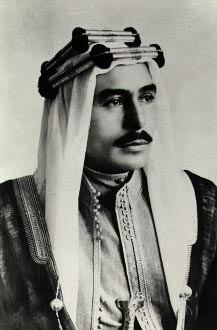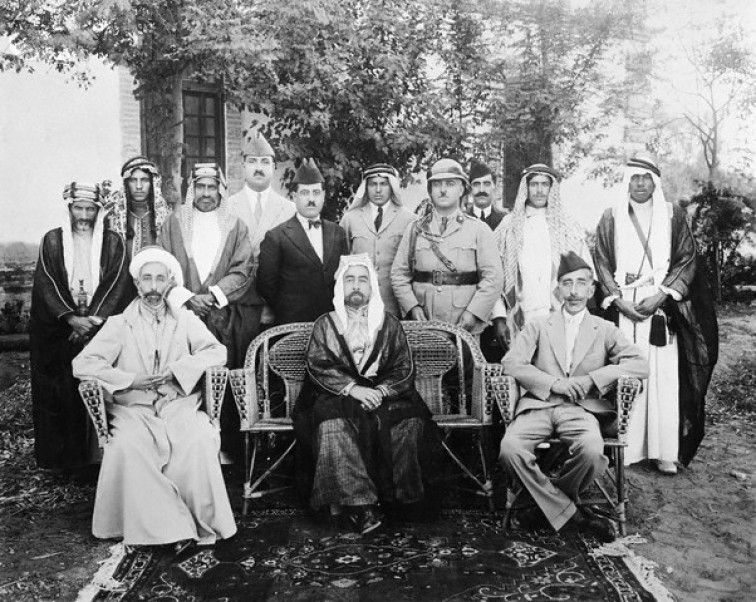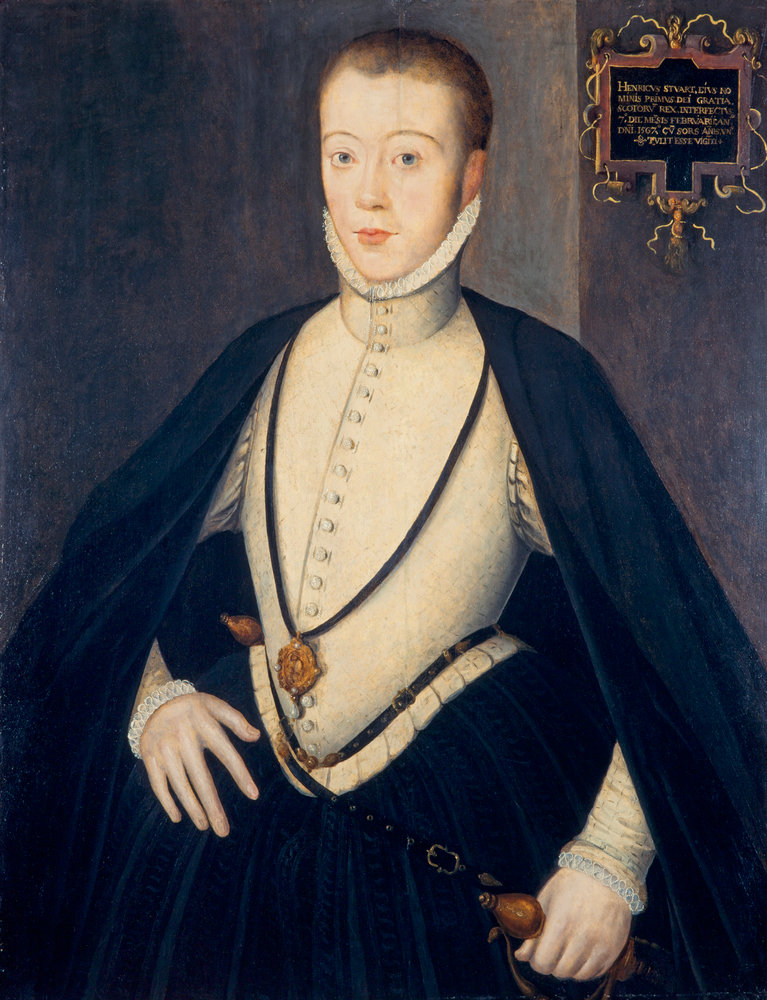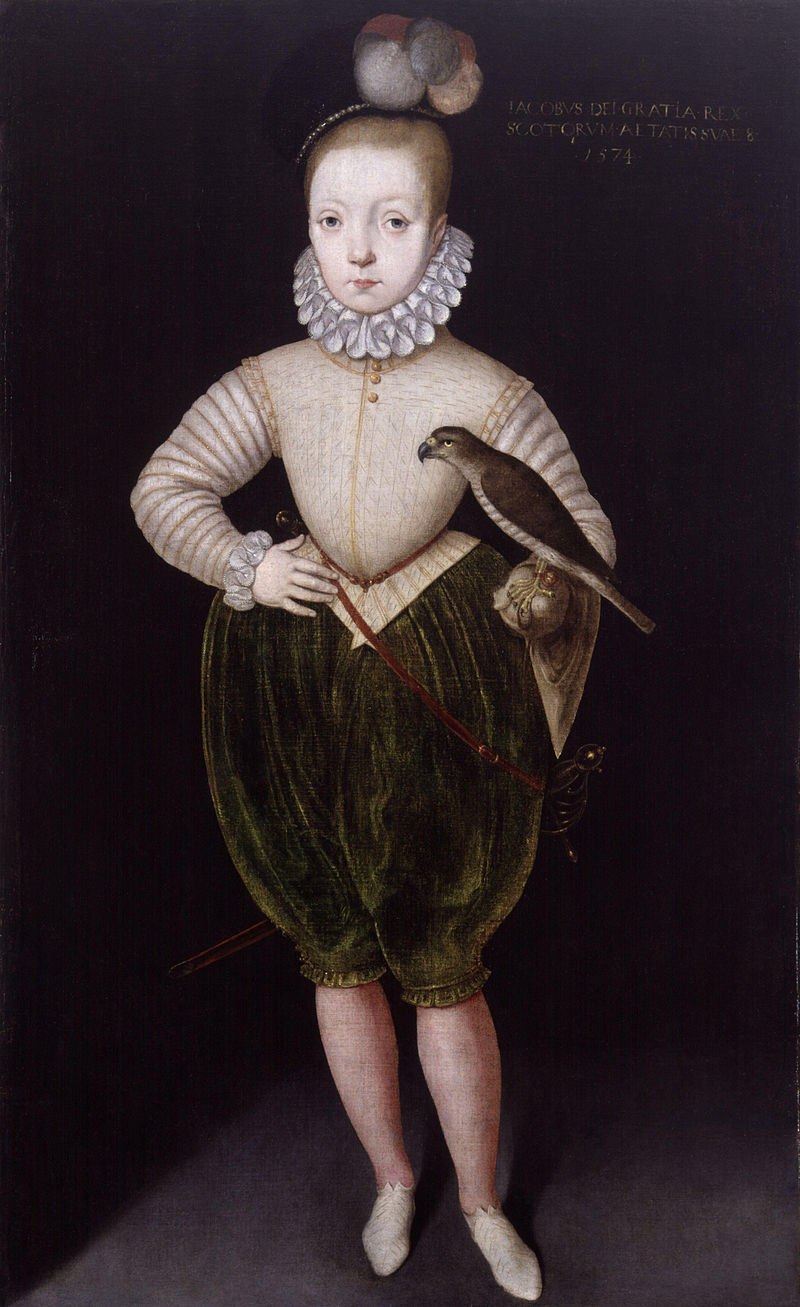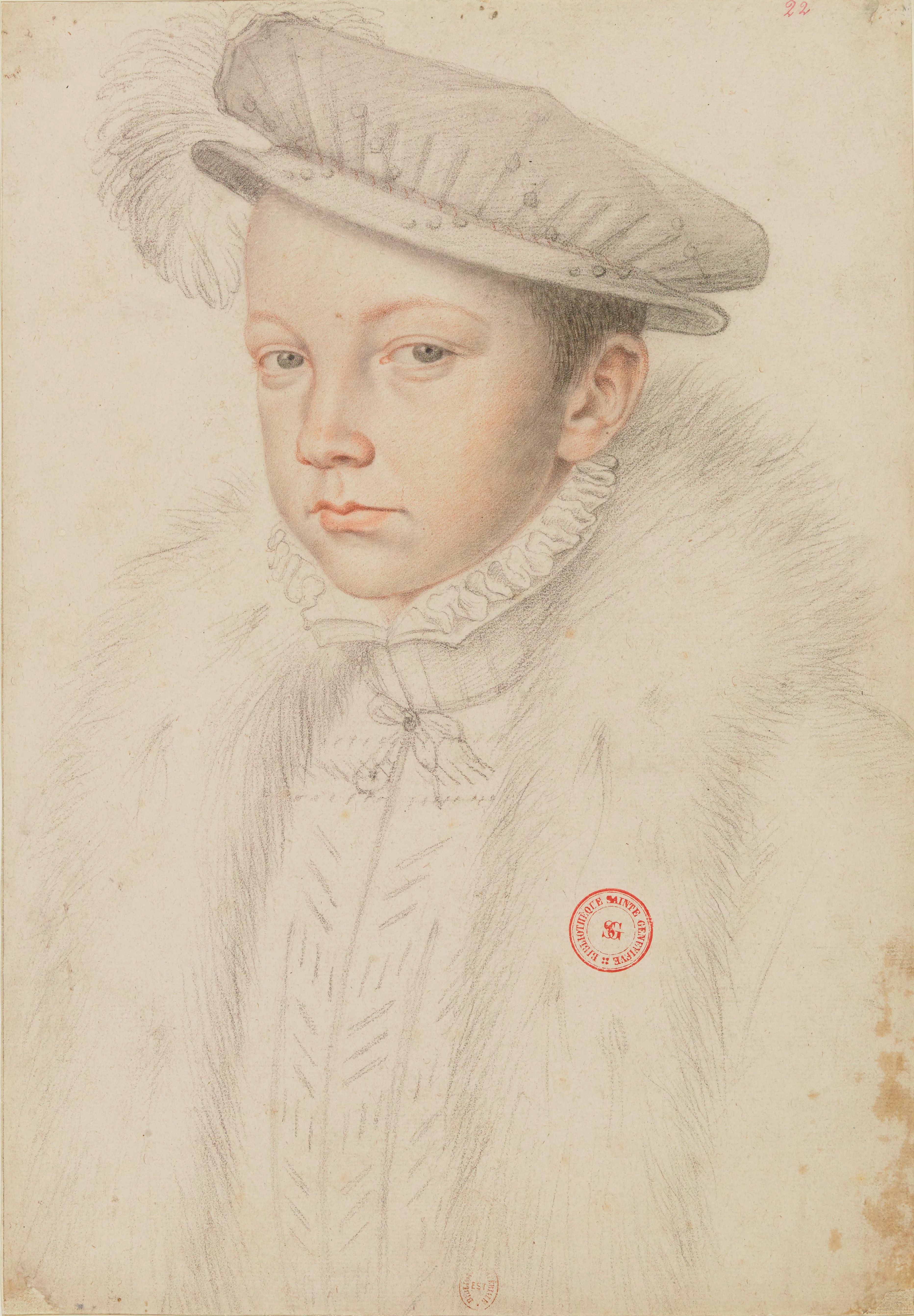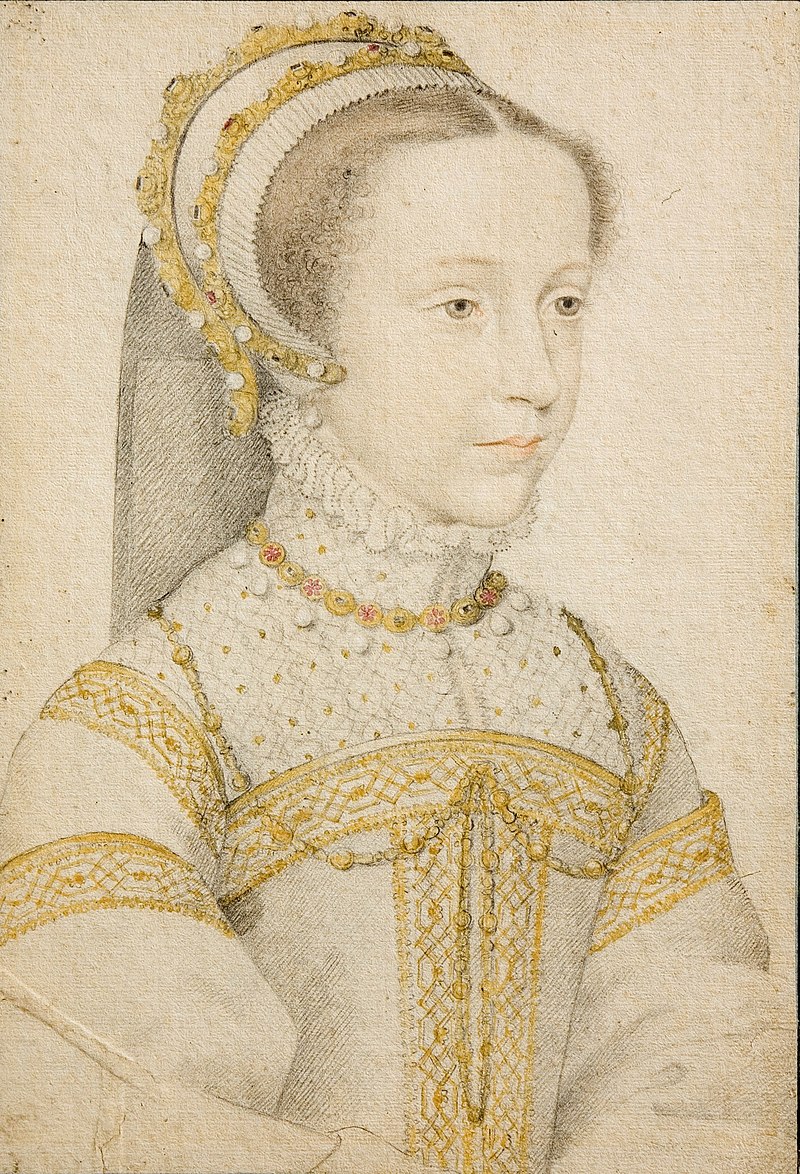by Susan Flantzer © Unofficial Royalty 2017

James Hepburn, 4th Earl of Bothwell; Credit – Wikipedia
The third and last husband of Mary, Queen of Scots, James Hepburn, 4th Earl of Bothwell was born about 1534 in Edinburgh, Scotland. He was the only son and the eldest of the two children of Patrick Hepburn, 3rd Earl of Bothwell and Agnes Sinclair, daughter of Henry Sinclair, 3rd Lord Sinclair.
Bothwell had one sister:
- Jean (Janet) Hepburn (died before July 27, 1599), married (1) John Sinclair, Master of Caithness, had issue (2) John Stewart, Lord Darnley (an illegitimate child of James V, King of Scots), had issue including Francis Stewart, 5th Earl of Bothwell (3) Archibald Douglas, Parson of Douglas, had issue
After Bothwell’s parents divorced in 1543, he was sent to be educated by his great-uncle Patrick Hepburn, Bishop of Moray at Spynie Palace, the seat of the Bishops of Moray. Bothwell was fluent in English and French. He had a special interest in mathematics and the works of ancient and contemporary authors writing about the strategies of war. In September 1556, Bothwell’s father died, and he succeeded him as the 4th Earl of Bothwell and Lord High Admiral of Scotland.

Spynie Palace; Photo Credit – By Bill Reid – http://en.wikipedia.org/wiki/File:David%27s_tower.jpg, https://commons.wikimedia.org/w/index.php?curid=7456451
In 1547, when she was five years old, Mary, Queen of Scots went to France to be raised with her future husband, the future François II, King of France. Although a Protestant, Bothwell loyally served Marie of Guise, the mother of Mary, Queen of Scots, and Regent of Scotland in Mary’s absence. She was extremely capable and set out to bring justice, peace, and prosperity to her adopted country. However, Marie did have to contend with the beginnings of the Protestant Reformation. In 1559, John Knox, leader of the Scottish Reformation and the founder of the Presbyterian Church of Scotland, started his fiery sermons, encouraging people to destroy images and desecrate churches. Soon, the entire country was on the verge of a civil war.
On October 31, 1559, Bothwell intercepted funds that Queen Elizabeth I sent from England to support the Protestant rebels in Scotland. This action made him the lifelong enemy of James Stewart, 1st Earl of Moray, Mary’s (illegitimate) Protestant half-brother, and other members of the Lords of the Congregation, a group of Protestant Scottish nobles who favored a reformation of the church according to Protestant principles and a Scottish-English alliance. In retaliation, later that same year, Crichton Castle, one of Bothwell’s principal castles, was laid to ruin by Protestant lords. Bothwell remained loyal to Marie of Guise and was entrusted by her to travel to Denmark and ask King Frederik II of Denmark and Norway for help. From there, he was to go to France to obtain additional French troops and to meet with François II, King of France and his wife, Marie’s daughter Mary, Queen of Scots.
While in Denmark, Bothwell met Anna Thorndsen, the daughter of Kristoffer Throndsen, a famous 16th-century Norwegian admiral. Bothwell and Anna were married by handfasting, the ancient word for a wedding, which was traditionally recognized as a binding marriage contract and was a legal form of marriage in Denmark and Norway at that time. Anna then traveled with Bothwell to the Netherlands. He promptly used up her dowry and then left her. Later, she traveled to Scotland to find him, but there was no reconciliation. There is an old Scottish ballad “Lady Anne Bothwell’s Lament,” in which the singer sings a lullaby to her baby son and recalls how his father seduced her and then left her. This could be a reference to Anna. Some historians believe Anna was the mother of Bothwell’s illegitimate son William Hepburn. Bothwell’s relationship with Anna would later be part of his final downfall.
After only a 17-month reign, François, King of France, aged 16, died in December 1560. Now a childless widow, Mary, Queen of Scots decided to return to Scotland. Her mother, who became Regent of Scotland in 1554, had died in June 1560. Mary returned to a very different Scotland from the one she had left as a child. Mary needed an heir, so a second marriage became necessary. Mary became infatuated with her Catholic first cousin Henry Stuart, Lord Darnley. Mary and Darnley were both grandchildren of Margaret Tudor, the eldest daughter of King Henry VII of England. Mary and Darnley married at Holyrood Palace in Edinburgh, Scotland, on July 29, 1565.
The marriage angered the Protestant nobles. Mary soon became disillusioned by Darnley’s uncouth behavior and insistence upon receiving the Crown Matrimonial, which would have made him co-sovereign of Scotland. Mary refused, and their relationship became strained. On March 9, 1566, when Mary was pregnant, Darnley and some fellow conspirators killed Mary’s private secretary David Riccio in Mary’s presence. Darnley was jealous of Mary’s friendship with Ricco and suspected him of being Mary’s lover. Mary was roughly pushed and shoved, and although the conspirators hoped she would miscarry, she did not. All the conspirators were banished except for Darnley, who was forgiven. On June 19, 1566, at Edinburgh Castle, Mary gave birth to a son, later King James VI of Scotland/King James I of England.
Mary’s marriage was all but over, and she began to be drawn to James Hepburn, 4th Earl of Bothwell. Bothwell entered into a conspiracy with Archibald Campbell, 5th Earl of Argyll and George Gordon, 5th Earl of Huntly to rid Mary of her husband. On February 10, 1567, Kirk o’ Field, the house where Darnley was staying, was blown up. Darnley and his servant were found dead near the house in an orchard outside the city walls. Since Darnley was dressed only in his nightshirt and had no injuries, it was assumed that he was strangled after the explosion.
Bothwell was one of those accused of murdering Darnley. Darnley’s relatives demanded vengeance, and charges were brought against Bothwell. On the day of the trial, Bothwell rode magnificently through Edinburgh to the trial flanked by nobles and members of the Hepburn family. The trial lasted for seven hours. Bothwell was acquitted, and it was widely rumored that he would marry Mary.
In April 1567, Mary visited her son, the future James VI, King of Scots/James I, King of England, at Stirling Castle. It was to be the last time Mary would ever see her son. On her way back to Edinburgh, Mary was abducted by Bothwell and taken to Dunbar Castle. Bothwell, who had married Jean Gordon, sister of Sir John Gordon and of George Gordon, 5th Earl of Huntly in February 1566, divorced her on May 7, 1567, citing his adultery with her servant as the cause. Mary and Bothwell were married on May 15, 1567. The marriage angered many Scottish nobles who raised an army against Mary and Bothwell. After negotiations at the Battle of Carberry Hill, Bothwell was given safe passage, and the lords took Mary to Edinburgh. The following night, Mary was imprisoned in Loch Leven Castle, on an island in the middle of Loch Leven. Between July 20 – 23, 1567, Mary miscarried twins, and on July 24, 1567, she was forced to abdicate in favor of her one-year-old son James.
Bothwell moved toward the north of Scotland, attempting to gain supporters, but was forced to flee the country. He reached Norway but was detained in Bergen, Norway, because he did not have the proper exit papers. Anna Throndsen, whom Bothwell had jilted, was now living in Bergen, where she had family connections. Bothwell’s detainment turned into imprisonment on the order of Anna’s cousin, Danish Viceroy Erik Rosenkratz. Anna filed a legal complaint against Bothwell for his use of her as his wife and demanded repayment of her dowry. Anna gave testimony that Bothwell had “three wives alive” including herself. Bothwell settled with Anna out of court, offering her one of his ships and promising her an additional payment which he never was able to pay, as he never regained his freedom.
Bothwell would have been released, but King Frederik II of Denmark and Norway had heard that Queen Elizabeth I of England was seeking Bothwell for the alleged murder of Darnley, and decided to take him into custody in Denmark to use a political pawn. However, as news from England and Scotland arrived, Frederik II eventually understood that Mary would never again be Queen of the Scots, and without Mary, Bothwell was politically insignificant. Instead of turning Bothwell over to England, Frederik II transferred him to Dragsholm Castle. There he was kept in appalling conditions. A pillar to which he was chained for the last ten years of his life can still be seen, with a circular groove on the floor around it. James Hepburn, 4th Earl of Bothwell died there on April 14, 1578. A body, allegedly said to be Bothwell’s, was buried at Fårevejle Church, near the castle. Bothwell’s ghost is said to haunt the castle, riding through the courtyard with a horse and carriage.

Coffin in Fårevejle Church with Bothwell’s alleged remains; Credit – Wikipedia http://www.gravsted.dk/person.php?navn=jameshepbu
This article is the intellectual property of Unofficial Royalty and is NOT TO BE COPIED, EDITED, OR POSTED IN ANY FORM ON ANOTHER WEBSITE under any circumstances. It is permissible to use a link that directs to Unofficial Royalty.
Works Cited
- Ashley, M. and Lock, J. (2012). The mammoth book of British kings & queens. London: Constable & Robinson.
- De.wikipedia.org. (2017). James Hepburn, 4. Earl of Bothwell. [online] Available at: https://de.wikipedia.org/wiki/James_Hepburn,_4._Earl_of_Bothwell [Accessed 20 Jul. 2017].
- En.wikipedia.org. (2017). Anna Throndsen. [online] Available at: https://en.wikipedia.org/wiki/Anna_Throndsen [Accessed 20 Jul. 2017].
- En.wikipedia.org. (2017). James Hepburn, 4th Earl of Bothwell. [online] Available at: https://en.wikipedia.org/wiki/James_Hepburn,_4th_Earl_of_Bothwell [Accessed 20 Jul. 2017].
- Unofficial Royalty. (2017). Mary, Queen of Scots. [online] Available at: https://www.unofficialroyalty.com/mary-queen-of-scots/ [Accessed 20 Jul. 2017].
- Williamson, D. (1996). Brewer’s British Royalty. London: Cassell.








